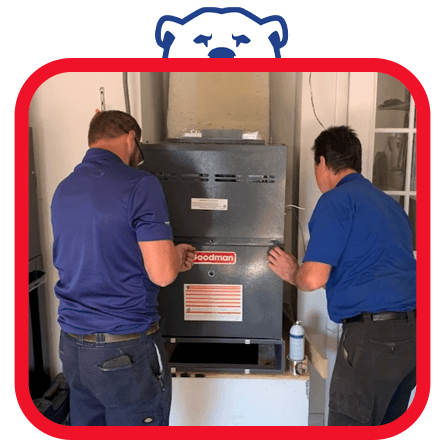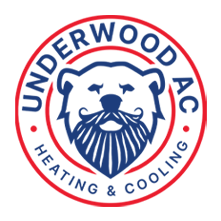
Your furnace may seem like a magic appliance at times, pumping out the heat you need to stay comfortable. Then something breaks, and you’re left scratching your head about what could be wrong and how much it’ll cost to repair. Take a few minutes to learn the fundamentals of how your furnace runs and what you should do when a problem occurs.
Heating Basics
Let’s begin with the simple process your furnace uses to heat your home. It starts with air circulation. Your furnace draws air from around your home, brings it through the furnace to heat it, and pushes it back out into your home.
To produce the heat, there’s a burn chamber where it burns either natural gas or kerosene. The heat comes from the exhaust gas that the combustion produces, which travels into a heat exchanger to heat the air moving through the system.
This explains the fundamental concept of how a furnace works. To get a better understanding, the following are the major components in your system and what they do.
Thermostat
You’re probably familiar with your thermostat, at least to the level of setting your temperature and changing between your AC and furnace. The thermostat is truly the brain of your system, signaling when to start and stop the heating cycle.
If there’s a problem with your thermostat, your furnace will not run properly. If it runs on batteries, plan to change them every six months to ensure your unit gets the right amount of power. Furthermore, thermostats only last for about 10 to 15 years, so if yours is older, consider a replacement.
Circulating Fan
The circulating fan is the primary driver of air circulation through your home and system. It draws air in through the return vents, creating a negative air pressure around them. Once the furnace heats the air, it then pushes the heated air back out in your home. This creates positive pressure at your output vents. The pressure difference is important for creating air movement throughout your house.
The circulating fan, which is also called a blower motor, is one of the parts that tend to collect airborne particles that made it through your filter. These particles slowly reduce the volume of air the fan can effectively circulate. Further, fan motor mounting bolts slowly loosen due to the vibration of the rotating fan, which can cause strain on the motor. All of this is addressed during your annual furnace maintenance.
Pilot Light/Igniter
Your furnace must ignite the fuel to start the burners. Some units use a small flame that burns all the time, which is called a pilot light. Most modern models use either an electric ignition, like a gas grill or a hot surface igniter.
If there’s a problem with the igniter, your burners will fail to light, so your system won’t produce heat. All ignition types wear out with use, so expect this to be a repair you might face. Don’t worry; replacing your ignition does not necessarily mean you’ll need a new furnace.
Burners
The burners do exactly what they sound like they would do; they burn the fuel. If you were to look inside of your furnace, they would look very similar to the burners on a natural gas furnace. To continue working effectively, they’ll need a routine cleaning, which is also part of annual maintenance.
Heat Exchanger
Your heat exchanger is where the heat of your furnace is produced and then transferred to the circulating air. It is a series of tubes the exhaust passes through before venting outside. In high-efficiency units, there may be two separate heat exchangers to capture more of that heat.
The most common problem with a heat exchanger is a crack. This is a significant safety concern since it will leak carbon monoxide into your home. The most common symptom of a cracked heat exchanger is a rattling while the unit warms up. You could also find water around the base of your furnace. If you suspect you have a cracked heat exchanger, turn off your system, and call a professional repair technician immediately.
Why Each Part Matters
Every part of your system is critical to how it functions. In some cases, a faulty component will cause the unit to fail to run altogether. In other cases, it’ll simply add strain to the rest of the system, leading to more repairs down the road. The best prevention is finding small issues early and resolving them quickly.
Underwood AC LLC brings reliable heating and air conditioning installation, maintenance, and repair to people around Davenport. Our team also provides pool heating and indoor air quality solutions. Schedule your service call with one of our expert technicians today.

